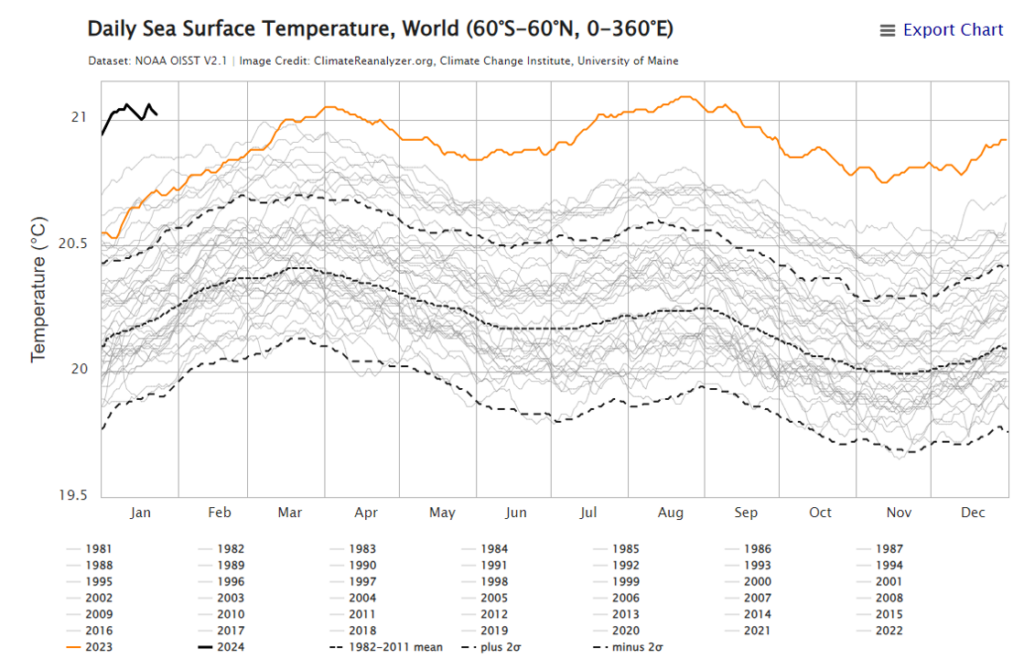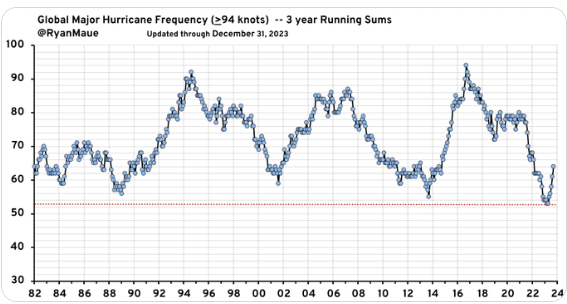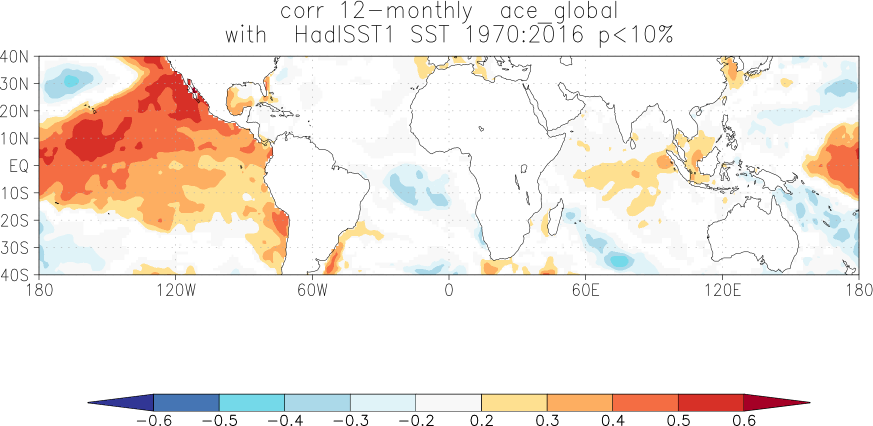By Frank Bosse
During weather events, how often are we confronted with the simple claim: “More heat leads to more energy available, which leads to severe storms“?
This is so catchy that it can be understood with just a basic knowledge of physics.
So is the claim: “The warmer the tropical sea the more severe tropical storms, called hurricanes over the Atlantic or typhoons over the Pacific.” is often bandied about. The storms all occur over the ocean, and record surface temperatures were reported in 2023.

The temperatures (orange) already at the start of April 2023 were well above those of a year earlier . (Image: Climate Reanalyzer).
Following this logic, the energy in storms in 2023 should also have been at a record level and there should have been more strong storms than ever before. And we did indeed see a record last year:

Screenshot tweet by Ryan Maue (NOAA) at X.
Since the beginning of systematic satellite-based observations in 1982, the number of severe tropical storms globally has never been as low as it was last year, in 2023. This contradiction between record-high ocean temperatures and record-low severe tropical storm numbers makes it clear that it is never as easy as often suggested. If you look at the relationship between the global ACE (for “accumulated cyclone energy” in storms) and the surface temperatures of the oceans, you will find the correlation is highly pronounced in the El Nino region, elsewhere there are only very unclear signatures.

This means: globally many storms with El Nino, few with La Nina. The image was generated with the KNMI Climate Explorer.
However, the oscillation there is natural and “modulates” the temperatures with a pattern in the Pacific tropics and subtropics with global effects. Note: In the real climate system, nothing is so simple that it can be explained with elementary school knowledge. Whoever tries to do this: you have to be particularly careful not to be manipulated.





A more interesting look would ask, “Why is the ‘average’ temperature, upon which the El Niño designation is based, rising? Slow, for sure, but steadily going up.
Can anybody explain why El Niño is only triggered at Pacific? Why only SST increases temperature on that specific location, and not also in Atlantic Ocean and Indian Ocean?
[…] From the NoTricksZone […]
[…] From the NoTricksZone […]
[…] From the NoTricksZone […]
[…] From the NoTricksZone […]
But.. but.. but.. from one of Canada’s best weather – but most hysterical climate – sites:
https://www.theweathernetwork.com/en/news/weather/forecasts/global-ocean-record-snowballs-into-2024-major-hurricane-impacts
Guess they don’t follow this site 🙂
[…] Simple Explanations Don’t Apply In The Complex Climate System […]